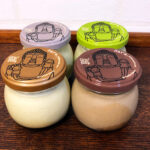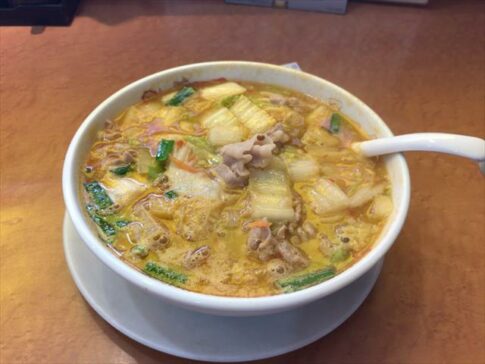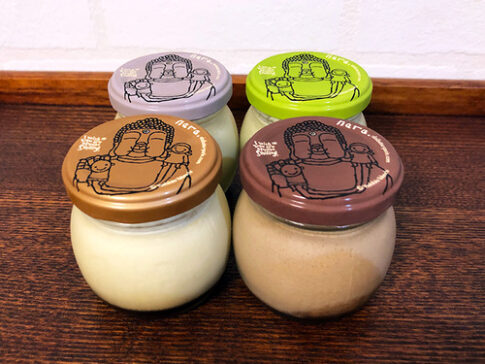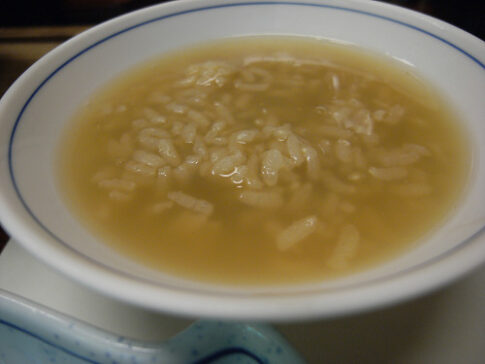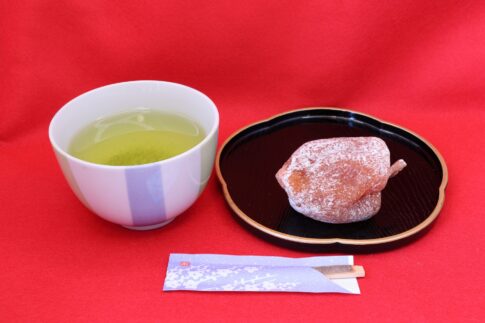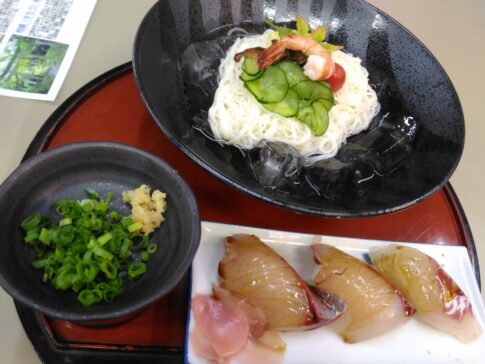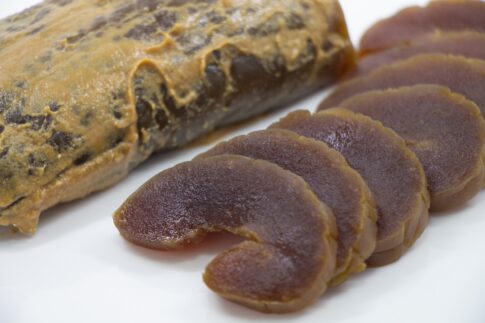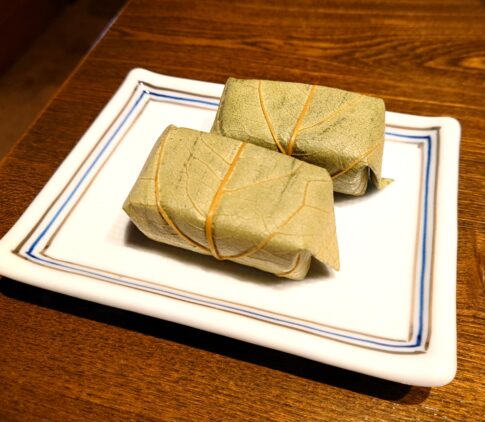Have you ever heard of Asukanabe?
It is a traditional Nara hot pot dish!
When you go to Nara, please give it a try!
What you need to know About Asukanabe
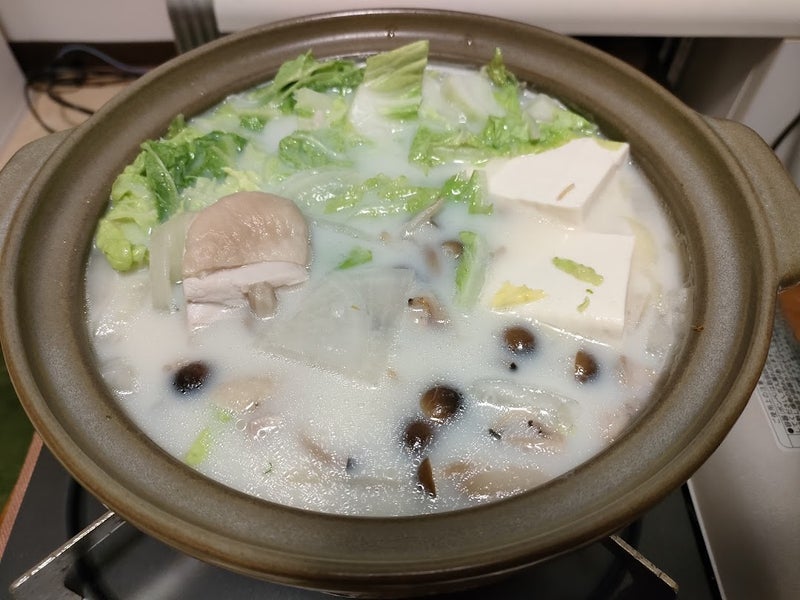
1. Basic Information of Asukanabe
- Main areas of transmission
Central and southern Nara Basin
- Main ingredients
Chicken, milk, harusame seaweed, shiitake mushrooms, Chinese cabbage, garland chrysanthemum, carrots, white onions, burdocks, etc.
- History, origin, and related events
Asuka nabe” is a local dish of Nara Prefecture, consisting of chicken and vegetables simmered in milk and broth.
In the Asuka period (710-794), an envoy from the Tang Dynasty brought a dairy product similar to condensed milk to Nara and presented it to Emperor Kotoku, who was very pleased with it.
This is said to have been the beginning of the drinking of milk in Japan.
At that time, milk was the drink of the nobility, but monks also began to drink it in secret, and eventually boiled the meat of their chickens with milk and ate it, which is said to be the origin of “Asuka nabe”.
As time went by, Asuka-nabe spread among the common people, but since milk was expensive at the time, goat’s milk was used.
In the early Showa period (1926-1989), the current form of “Asuka nabe” was invented using milk, a local product, as Asuka’s specialty.
- Occasions and seasons for learning to eat
It is eaten throughout the year, but especially in winter, when it is eaten more often to warm the body.
- How to eat and drink
Asuka-nabe” is eaten with your favorite seasonal vegetables, chicken, and other ingredients.
Since the broth is made from many vegetables and chicken, it is also delicious with udon noodles or other dishes for the end of the meal.
In recent years, a new local dish called “Yamato nabe” based on “Asuka nabe” has also come to be eaten.
In Yamato-nabe, soy milk is added instead of milk, making it a mild, rich, but healthy version of the nabe.
- Efforts for Preservation and Succession
(Outline of the people who have passed on the tradition, preservation groups, use of SNS, modern efforts such as commercialization, etc.)
It is eaten at home on a daily basis and passed down from parents to children. It is also served in school lunches.
In addition to “Asuka-nabe”, Yamato-nabe with soy milk and other arrangements is also served at restaurants in the prefecture.
2. How to cook Asukanabe
Ingredients (4 servings)
240 g Yamato meat
harusame (harusame seaweed) 40 g (1 lb) shiitake mushrooms
shiitake mushrooms 4 pieces of shiitake mushrooms
Chinese cabbage 400g
garland chrysanthemum 80g
carrot 80g
White onion 120g
burdock root 60g
tofu 200g
Milk 320g
Chicken soup 400ml
White miso 80g
Light soy sauce 4 teaspoons
Directions
1 Cut vegetables and other ingredients into bite-size pieces.
2 Boil chicken broth, add milk, season with white miso and light soy sauce, and add ingredients in order of hardness. Add the garland chrysanthemum and harusame just before eating.
3 When eating, garnish with condiments (green onion, ginger, sudachi, chili pepper, etc.) to taste.
3. Details about Asukanabe
It is a one-pot dish in which chicken broth is seasoned with milk, white miso paste, soy sauce, and sugar, and chicken and vegetables are stewed. Ingredients include chicken, Chinese cabbage, white onion, shiitake mushrooms, potatoes, carrots, tofu, and shirataki mushrooms. When eaten, it is either dipped in beaten egg like sukiyaki, or taken with the broth and condiments on a plate.
It is said to have originated in the Asuka period (710-794), when a Tang Dynasty (618-907) migrant monk made a nabe dish using goat’s milk to ward off the cold.
Asuka-nabe is a local dish that has been passed down in the Nara region since ancient times, and is slightly different from the traditional nabe with soup stock made from kombu (kelp) and soy sauce!
Asuka-nabe is a creamy nabe with chicken and vegetables in a thick milk-based broth, and is still a local dish loved by many people today. It is easy to eat even for those who don’t like milk.
4. Where to eat Asukanabe in Nara
- Zen
This is Zen, located about a 1-minute walk from Nara Station. The restaurant boasts motsu nabe (motsu hot pot) and ramen, but you can also enjoy “Asuka nabe”. (Asuka hot pot) .The restaurant has a relaxed and cozy atmosphere.
The “Asuka nabe” available at Zen is ¥1,280 (excluding tax) and is very creamy with the richness of milk, and is served with plump chicken thigh meat and tsukune (chicken meatballs). For lunch, we recommend the hearty “Asuka Nabe Course” for ¥2,500 (tax included).
The drink will warm you up, making it a perfect winter menu.
- Edogawa Naramachi Branch
The next restaurant in Nara Prefecture where you can enjoy Asuka nabe is Edogawa Naramachi.
It is located about a 10-minute walk from Kintetsu Nara Station.
The restaurant is housed in a historical kimono merchant’s building, and is popular among foreign customers for its quaint interior.
You can feel the atmosphere that is uniquely Nara. It is recommended to visit during a break from sightseeing.
How about having lunch or dinner during your trip to Nara? At Edogawa Naramachi, you can enjoy the Asuka Nabe Course for ¥3,500 (tax included). In addition to the Asuka nabe, you can also enjoy a mini hitsu-mabu set. Enjoy a nabe filled with Nara vegetables, salad, and Nara-style menu♡.
What makes this “Asuka nabe” so special is the soup made with fresh milk! Enjoy it with Nara’s vegetables.
- Harishin
The next restaurant we will introduce where you can have Asuka nabe in Nara Prefecture is Harishin.
It is located about a 12-minute walk from Exit 2 of Kintetsu Nara Station.
The recommended lunch at “Harishin” is “Asuka Nabe Gozen” for ¥1,800 (tax included).
Only 10 people a day can enjoy this rare and hard-to-find dish!
Please try Asuka-nabe, which is made with plenty of exquisite broth made from white miso paste, chicken broth, and milk.
In addition to Asuka nabe, the restaurant also offers other dishes such as “Kamimichi bento” ¥3,190 (tax included), which is filled with Nara’s ingredients such as ancient cheese “So”, persimmon vinegar produced in Nishi-Yoshino, kuzu (arrowroot jelly) tofu hardened with Yoshino-kuzu, and Yamato vegetables.
Inside the restaurant, there is a kind of sunken hearth where you can enjoy a traditional Japanese tatami room.
You can also view the beautiful green courtyard from the tatami room.
Summary
Asukanabe has a unique taste, so it is worth trying it at least once!

